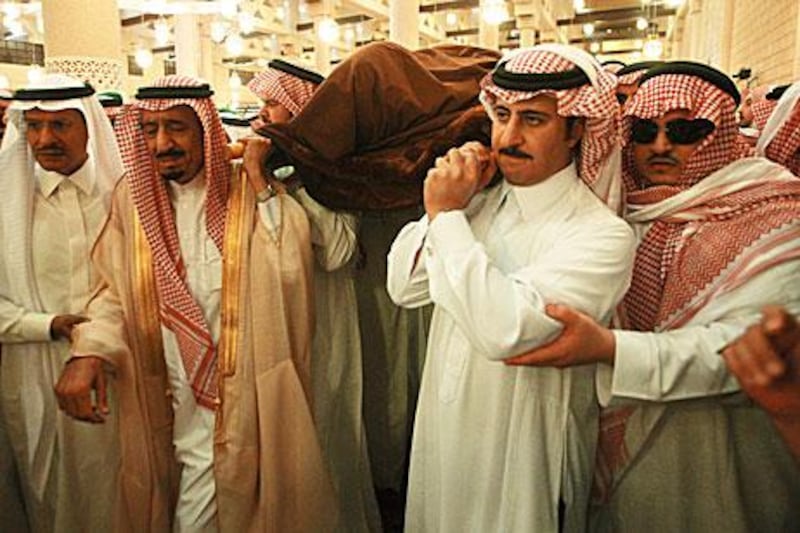Saudi Arabia relied on its financial might and its position as a regional power to steer its way through 12 months of domestic and diplomatic challenges.
With the tumult in Tunisia, Egypt and Libya reverberating beyond North Africa, King Abdullah bin Abdulaziz Al Saud announced in March a US$133 billion (Dh488bn) spending plan to build homes and combat unemployment.
Abroad, the kingdom attempted to tread a path between bolstering some monarchies such as Bahrain and Oman and shunning regimes it deemed beyond hope – all steps aimed at ensuring Iran did not take advantage of the turmoil.
With an unemployment rate of 10 per cent, the investment announced in March aimed to tackle social ills that were inspiring protest movements elsewhere.
Government employees received a two-month salary bonus, the public sector minimum wage was increased and the interior ministry set about hiring 60,000 staff. To tackle a vast housing shortage, a $67bn programme to build 500,000 homes was announced.
The spending programme appeared to nip any popular protests in the bud. Online calls for a rally in Riyadh failed to draw a crowd.
Meanwhile, there were sporadic protests in the predominantly Shiite Eastern Province where the population has long complained of being marginalised.
In June, several women decided to defy the ban on female drivers. Their determination may have helped spur the announcement in September by King Abdullah that women could participate in elections for the first time in 2015.
Saudi’s foreign policy has been dominated by the perceived Iranian threat. In March, Saudi troops made up the bulk of the GCC force invited by Bahrain’s government to help it put down pro-reform protests led by the majority Shiites. Saudi officials accused Iran of having a hand in the protests.
Riyadh led attempts to broker a deal for Yemen’s Ali Abdullah Saleh to step down, and he entered the kingdom for medical treatment. Tunisia’s Zine El Abidine Ben Ali also took refuge in Saudi.
Last week, King Abdullah used a GCC summit to call for a Gulf union. He provided no details but his proposal was clearly aimed at bolstering coalition ties to pose a more united front against Iran.
In the case of Syria, the king used unusually tough language. In August, he called on Bashar Al Assad to “stop the killing machine”.
In October, Prince Nayef bin Abdulaziz Al Saud, 78, was named heir to the throne after the death of Crown Prince Sultan bin Abdulaziz Al Saud.
foreign.desk@thenational.ae





